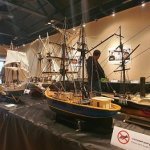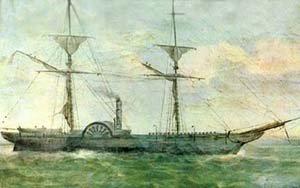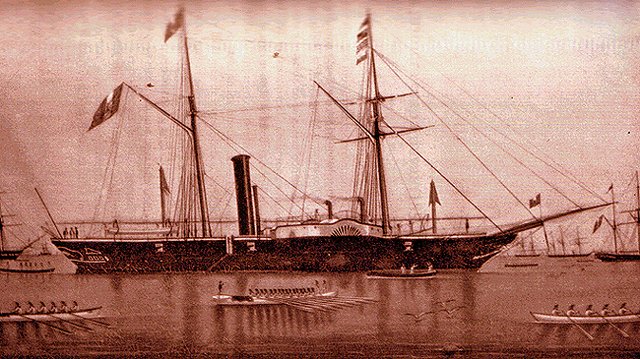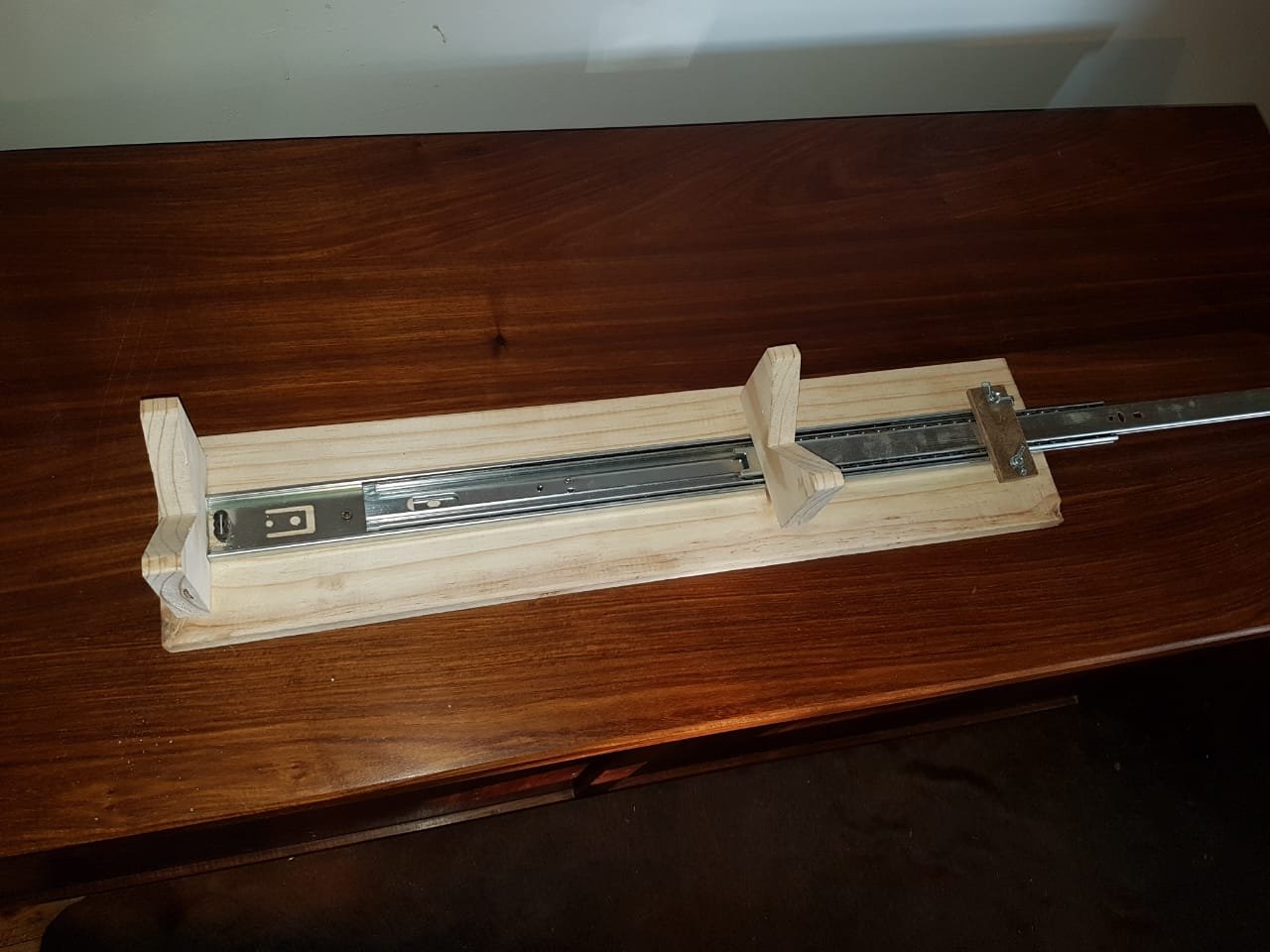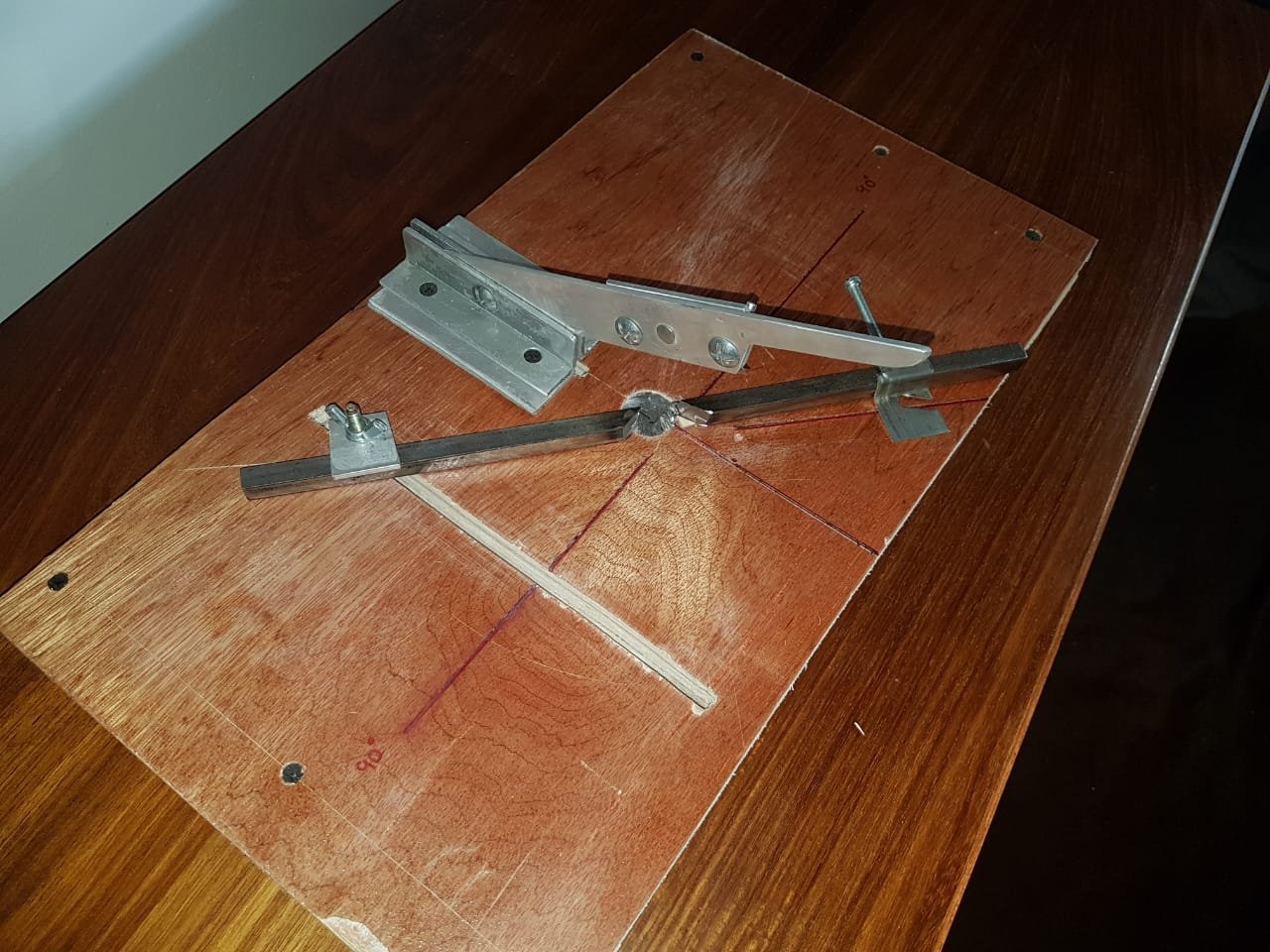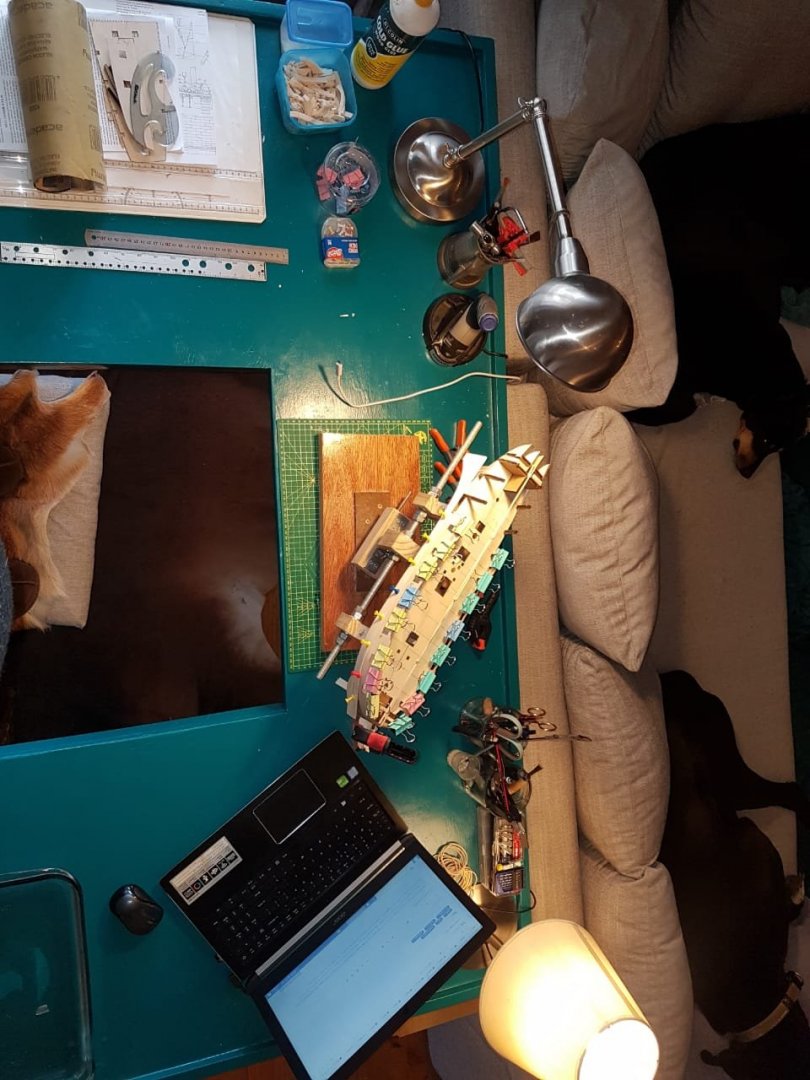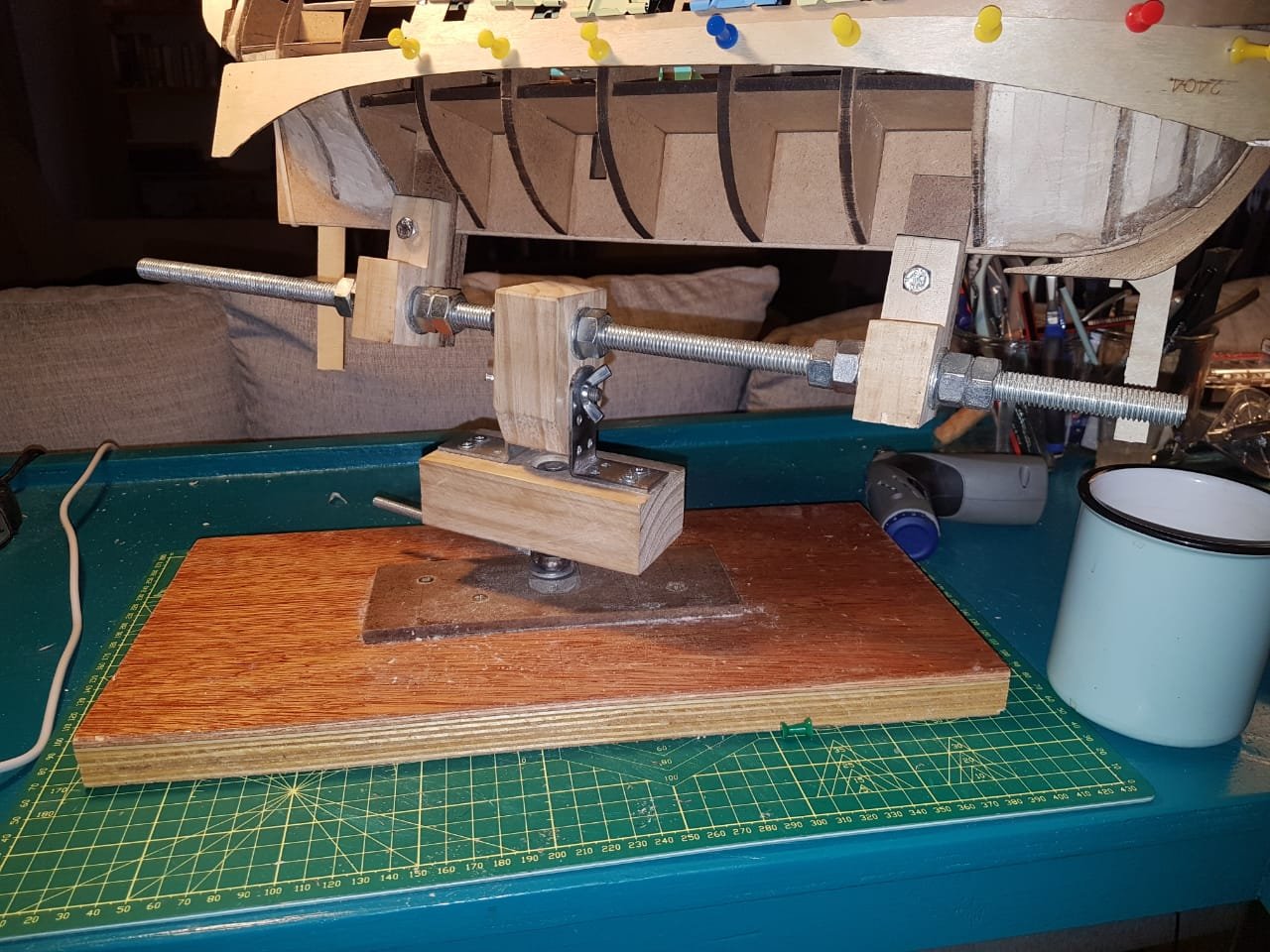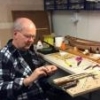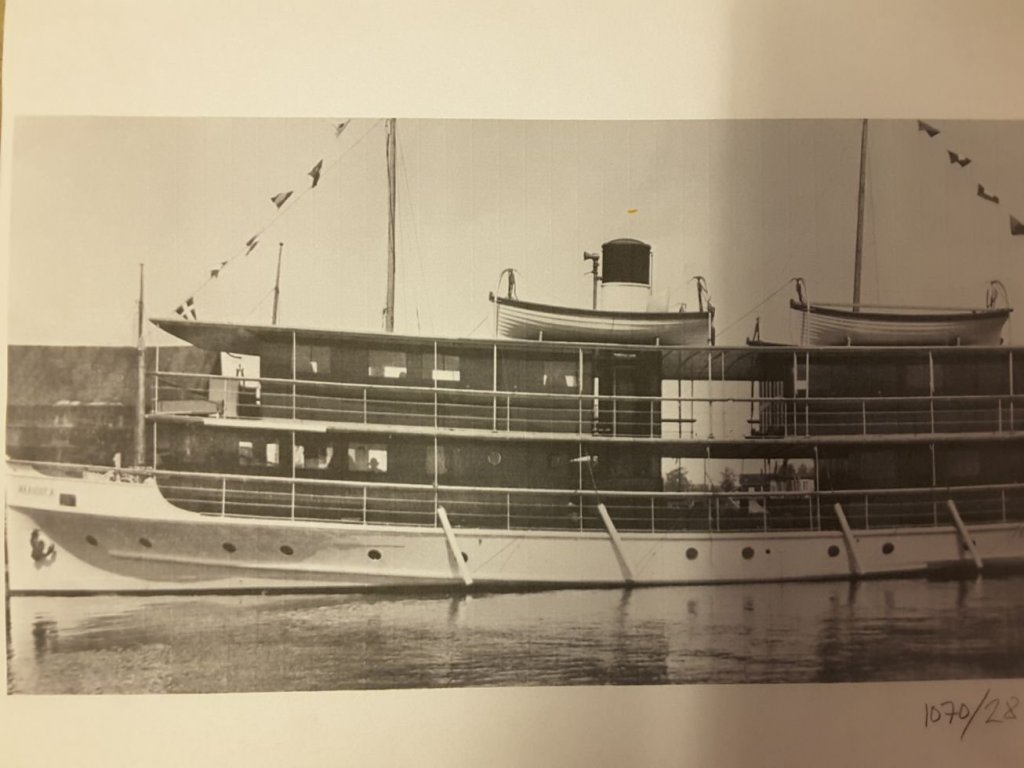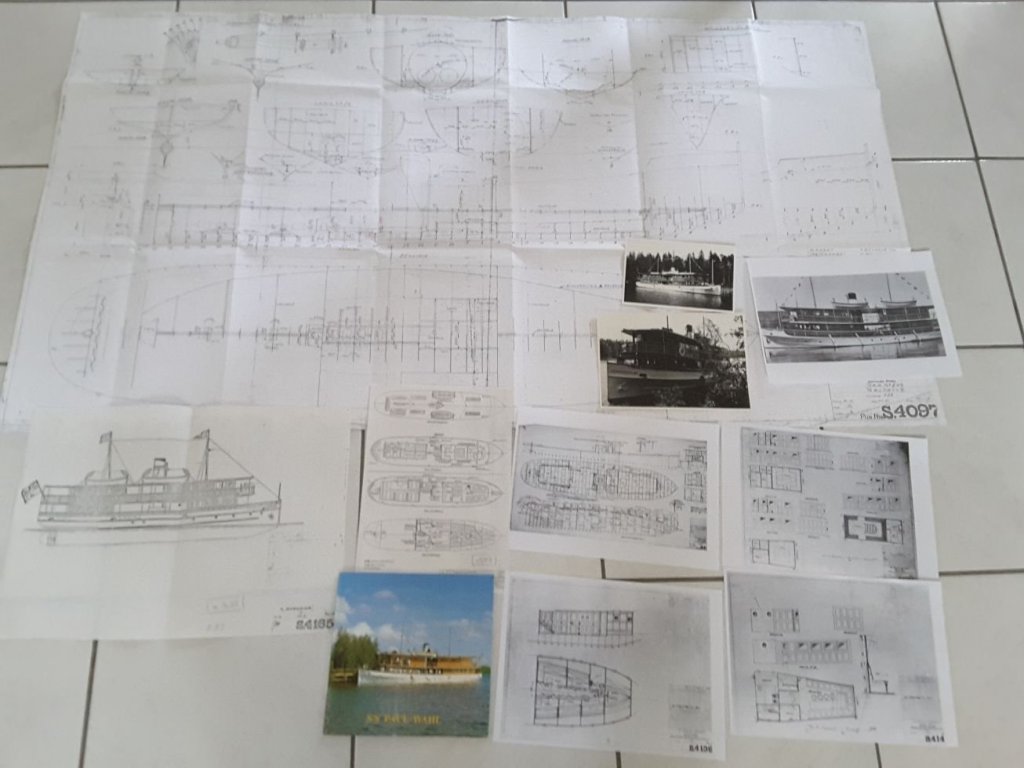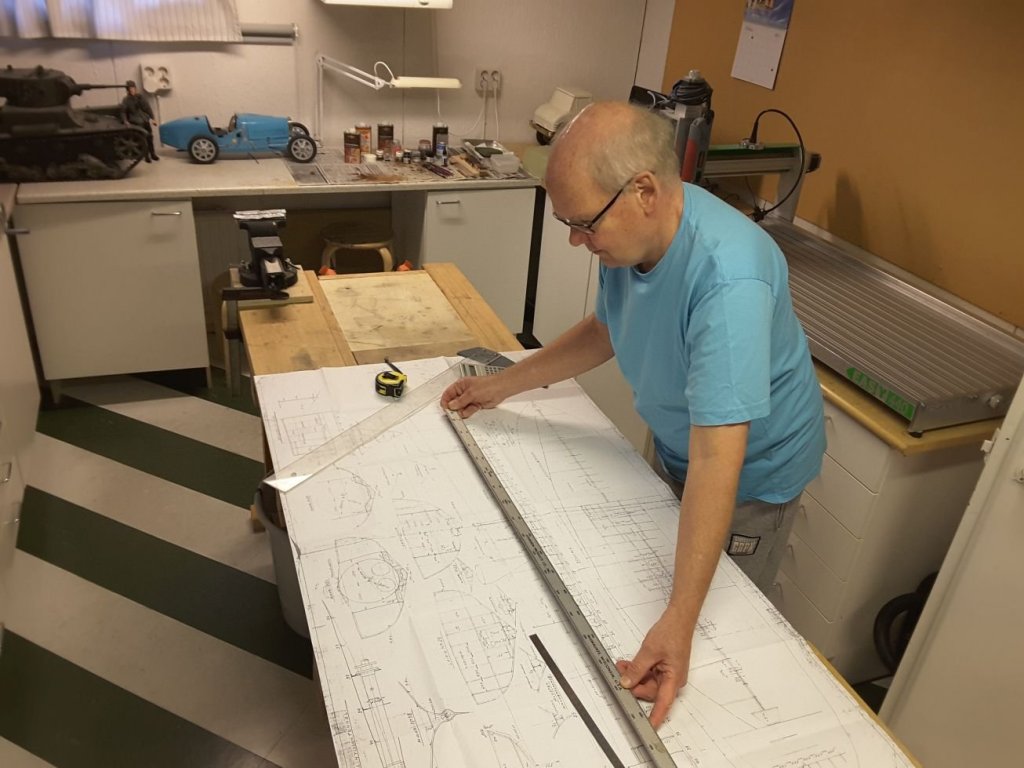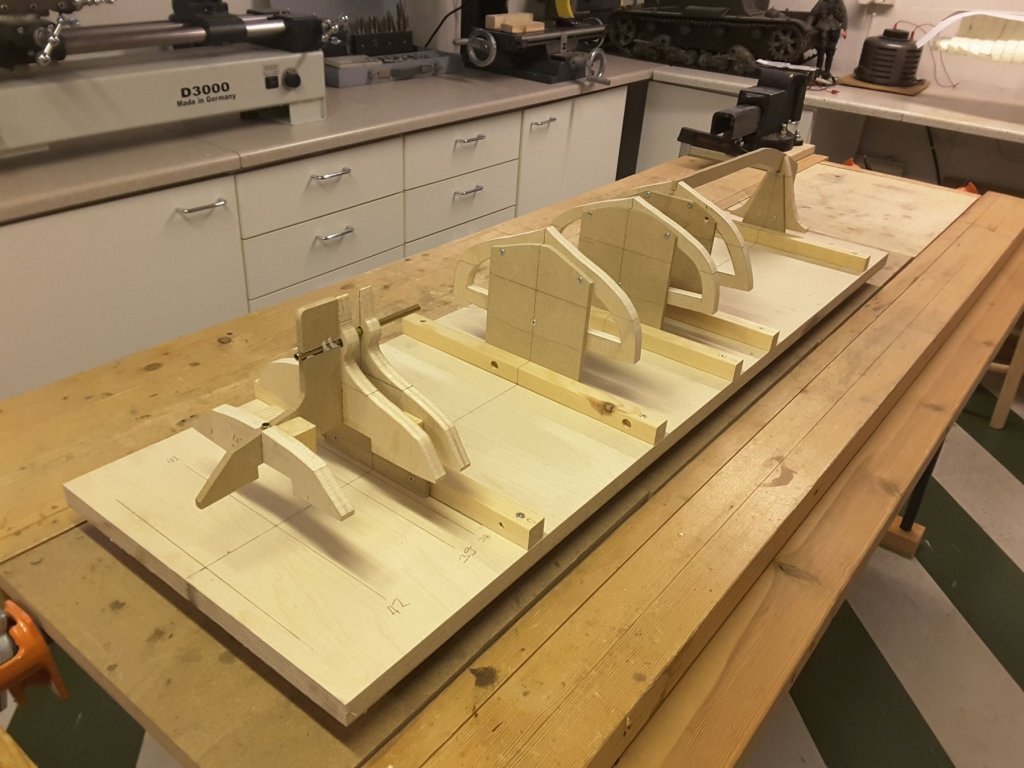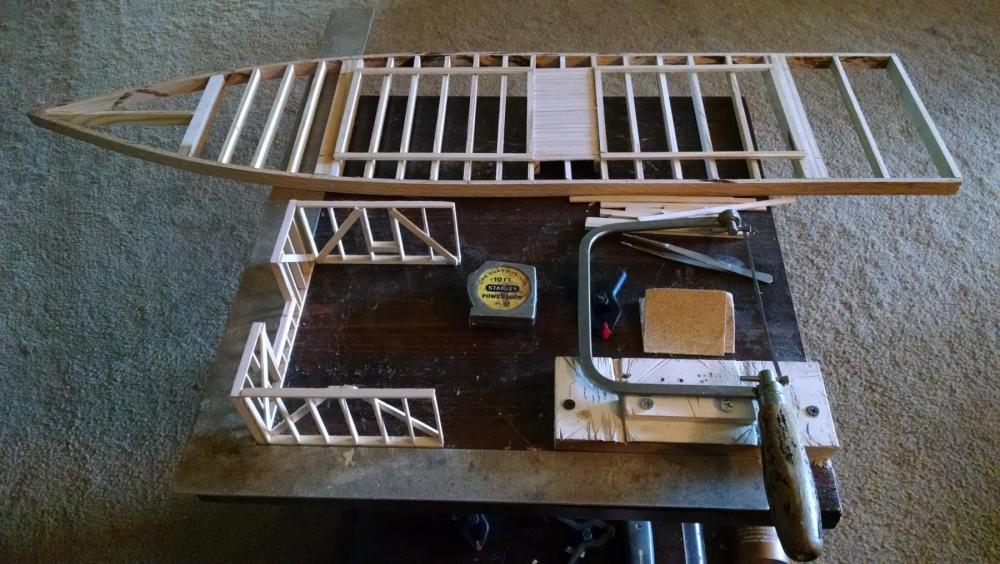Search the Community
Showing results for tags 'steamer'.
-
Bill E. is a founding member of Model Shipwrights of Western NY and has been modeling since a very early age so his builds are many and his techniques over the years have evolved and embraced modern technology to a large extent. I would have to say he is our main technologist and through him we have been introduced to these modern techniques in a first hand manner. Bill's interest have almost exclusively been in the area of early America powered Navy and Civil War Era craft. He comes by the Civil War interest honestly, as his great grandfather was a captain in the RI First Calvary. Bill even wrote a book about him," Don't Tell Father I have Been Shot At" as he was a war hero and had kept many artifacts and writings about his service. There is a brief on the Amazon Book Store for those interested. Many of his models have been donated or loaned to various museums around the country and you may see one of his latest works , the USS Langley at the Smithsonian. His most recent endeavor has been the USS Agawam, a double ender gunboat of the Sassacus class built during the Civil War. A reference can be found at https://en.wikipedia.org/wiki/USS_Sassacus_(1862). This vessel is on loan to the Military History Society of Rochester NY and is the center piece of a recent expansion of the museum. What promotes Bill to the front of our group is his penchant for research, incorporation of modern technology, his vision of model end point and undying passion. Bill has been known to trot down to the National Archives, camp out nearby and bike in to research a subject. He employs computer design to fabricate laser cut intricate parts, he employs vacuum forming techniques for certain elements and he utilizes numerous finishing techniques that set his model apart. Herein is not exactly a build log but a build progression hopefully showing his methodology in building Agawam. Please follow along as entries are made over a short period of time. Bill is a modest guy so if there are questions of further inquires I will get answers as this thread unfolds. Joe
-
Hi All I decided to work on 2 models at the same time , perhaps this is because I do get bored of looking at the same build every day. So i got the idea of working on 2 models , and as i work on different stages of each model, I hope to have fun . Here is the first one, it is Vapor Rimac 1848, a side wheel paddle steamer. I didn't start shooting the building log from the begging cause it looked awful . please help me with your comments . thank you all
- 19 replies
-
- vapor rimac
- paddlewheel
-
(and 1 more)
Tagged with:
-
Good Morning kids! I just wanted to post a couple of photos of some of the items that I have made to assist with my first build. They really are nothing fancy, their focus is on cheap and cheerful. I thought this might help for those of you looking for ideas on how to save some money with this already expensive project. If you have any suggestions, questions or comments please let me know and I will do my best to respond. The photos below are the following. A steam tube, guillotine for cutting specific angles and lengths, an adjustable keel rest and a lockable, adjustable keel clamp(which I absolutely love). I have also included a photo of the desk I made specifically to build this vessel. please excuse the strange colour. I entered into a rather weird negotiation with my girlfriend and somehow ended up agreeing to paint this desk "teal" in exchange for the permission to build it.
-
After my latest build, the French cutter Le Cerf, I was looking for a new project. Otherwise my days as a retired old chap would have been too long. Luckily I happened to find out that the formerly skipper of the lake steamer S/S Maaninka was about to give up his original drawings of the ship. His idea had been to make a model of the ship, but due to his high age decided not to do so, and was searching a good home for his drawings and someone who would make the model of her. Well, I promised to try that, and here we are. The ship in question is a lake steamer, built in Varkaus Finland on 1919 at the Ahlström mechanical works. This shipyard was a famous one in the country having made ships from 1862 until 1964, making well more than 800 different vessels, and the ship in question was the number 547. As already stated, the ship was made during 1918...1919, and was named S/S Maaninka. She was made of iron with a riveted hull, the overall length being 87´ and beam 20´ , and was equipped with a two cylinder compound steam engine. Since this date the ship has changed it`s name many times, her present name being S/S Paul Wahl, and situated in the harbour of the city Savonlinna. This summer we were lucky enough to attend to a short cruise on the ship and take several photographs of the details on board, in order to help the building of the model. I was thinking to make a working model of her with a radio control and equipment like sound generator and smoke generator, and use the normal plank-on-bulkhead method, but cover the hull with some sort of aluminum foil to represent the rivetings. Plating the wooden hull with foil is quite new method for me having never tried that, but aeroplane modellers have used this method when building large scale models. So in the future we will see how it works. Original picture of S/S Maaninka Original drawing & other documents. Based on these the model must be made. Measurements made and first ideas thought. 20 mm thick plywood was selected as a platform for the build. Unfortunately this was not straight enough so it had to be straightened by screwing two angle irons below. The original drawing included only 7 bulkheads. Those were sawn from 12 mm thick balsa plywood and attached into platform. Future will tell if they are enough, or should there be more in order to keep the correct lines of the hull. Drag files here to attach, or choose files... Insert other media Uploaded Images 20171122_081347.jpg 125.05 kB
-
Hi everyone, After seeing all the great paddle boats some folks are building out there, I decided to attempt one myself. Not sure if this build log will help anyone, but I hope it inspires someone to just build what they see in their head. I am a firm believer that the skills we all possess ( being Model Ship Builders ) should allow us to think out of the box and let our imagination run amok..... Anyway, enough sermonizing.... Once I decided on the scale, I ripped some red oak on the table saw for the perimeter frame of my deck, Then I ran a bunch of southern yellow pine for all the joists and cabin framing. Having spent my 20's and 30's as a custom home framer this project looks like a no-brainer. We shall see... I guess I am still looking for that masterpiece as I'm sure we all are... Now for the details so far. The hull will be 36" long by 8" wide ( not sure what style it will be yet ) but at least I know what I want the cabin structure to look like.So started to go ahead and build the walls. At this point, nothing will be attached to the deck so best to plank the deck and work on the cabins separately ( that piece worker mentality again,,,lol ). As you can see the coping saw sitting there, I also have decided the the only power tool I will use on the boat is the table saw ( why make it easy.... ) Hope you follow long, it could be a wild ride.... Thanks for looking in, Keith
-
Hi friends, I came across a book that might be of interest to those who are interested in old steamships, tugs and other port vessels, or simply in ice-breaking itself. Documentation is rare. Here's the review: M. Görz und M. Buchheister Das Eisbrechwesen im Deutschen Reich Reprint der Ausgabe von 1900 (Icebreaking in the German Reich) (Reprint of the book from 1900) This book is a most complete documentation of the ice-breaking business in imperial Germany. Authored by M. Görz and M. Buchheister, both were directors of waterway administration in imperial Germany and therefore experts on ice-breaking business. When this book was compiled, ice-breaking was quite a young shipping discipline: Just for 25 years this bunch of specialised ships was in existence. The German Imperial Reich, by itself just a quarter of a century young, developed to a mighty industrial nation. Steam power and industrialisation did change the structure of the economy in deep and the volume of transportation increased dramatically. Ice on the waterways and in the ports, as was normal since ever, now disturbed the growth of economy, since production went on in summer as in winter times, materials had to be supplied and products had to be delivered. Another aspect of the ice-breaking business is the prevention of severe flooding of the river neighbouring communities due to ice barriers building up. Continuos ice-breaking by ships during the winter time could prevent this. This principle works until today. Germany was united in 1871/72 to a single imperial Reich. Thus centralised, the administration started work on a number of development projects, so the foundation, development and refinement of infrastructure projects throughout the Reich. The objective to keep waterways open for the whole year, could be tackled with the newly developed iron ships with a reliable steam propulsion. It still needed some research on the optimal shape of the hull, especially the bow and the ship‘s construction to withstand the brutal forces of the ice. At first, the book leads through the geographic facts of the rivers and waterways in focus, the technique of ice-breaking to move on to the technical facts of the ice-breaking vessels on the various arenas. In Germany, the waterways showed a wide variety in terms of location, size, ability to serve as a waterway, climate conditions, shipping volume, ports and, finally, the icing conditions: Located in the east of Germany with it‘s harsh winters the Weichsel, Nogat, Memel, Pregel, the port of Danzig and the river Oder. In the north the port of Kiel with the Kaiser-Wilhelm-Kanal (the Kiel canal), the port of Flensburg. In the west the rivers Elbe, Weser, Rhine with the ports of Hamburg, Cuxhaven, Bremen and Bremerhaven, Duisburg. The first chapter is focused on geography and ice-breaking in general, which didn‘t happen exclusively by ships. Especially usage of explosives is given some room, but at the end, long-term minded ice-breaking can only be done by specialised ships. The second chapter focuses on ice-breaking ships in the various scenarios and regions. Information is provided about purchasing, design and construction, specialties, sizes and measures, technical data of the vessels, especially about those: „Eisbrecher I“ (Hamburg 1871), „Eisbrecher II“ (Hamburg 1877), „Hofe“ (Hamburg 1877), „Trave“ (Stettin 1879), „Weichsel“ (Danzig 1880), „Montau“ (Danzig 1882), „Simson“ (Hamburg 1883), „Ossa“ (Danzig 1884), „Ferse“ (Danzig 1884), „Königsberg“ (Elbing 1885), „Stettin“ and „Swinemünde“ (Stettin 1888), „Siegfried“ (Kiel 1888), „Berlin“ (Stettin 1889), „Nogat“ (Danzig 1889), „Möwe“ (Hamburg 1889), „Wal“ (Uebigau n. Dresden, 1889), „Delphin“ and „Robbe“ (Uebigau n. Dresden 1889), „Wodan“ (Bremen 1889), „Lüneburg“ (Hamburg 1890), „Steknitz“ (Lübeck 1891), „Eisbrecher III“ (Hamburg 1892), „Elbe“ (Hamburg 1892), „Eisbär“ and „Walross“ (Stettin 1892), „Widder“ (Stettin 1892), „Molch“ and „Salamander“ (Uebigau n. Dresden 1892), „Donar“ (Bremen 1892), „Schwarzwasser“ (Danzig 1894), „Brahe“ (Elbing 1894), „Prussina“ (Danzig 1894), „Scorpion“ (Uebigau n. Dresden 1895), „Drewenz“ (Schichau 1896), „Welle“ (Danzig 1896), „Schlange“, „Eidechse“ and „Drache“ (Uebigau n. Dresden 1892), „Fribbe“ (Danzig 1898), „Wakenitz“ (Lübeck 1899) The third chapter give insights into operations, effects and costs of an ice-breaker. Besides a view into the economical figures of ice-breaking operations, the authors show various operation profiles ind the various environments (medium river, large river, port, near-shore sea bay). By the documentation of chapters 1 and 3, the reader gains a good insight into the „ice business“. The annex to the book includes reproductions of maps of the mentioned waterways, graphical statistics to climate and ice data, and a number of drawings of some of the mentioned ice-breaking vessels. This is usually a look to the side, from the top, from the bow, some cutaways and a frame line drawing: „Weichsel“ (Danzig 1880), „Ossa“ (Danzig 1884), „Ferse“ (Danzig 1884), „Nogat“ (Danzig 1889), „Schwarzwasser“ (Danzig 1894), „Welle“ (Danzig 1896), „Fribbe“ (Danzig 1898), „Stettin“ and „Swinemünde“ (Stettin 1888), „Berlin“ (Stettin 1889), „Trave“ (Stettin 1879), „Eisbrecher III“ (Hamburg 1892), „Elbe“ (Hamburg 1892), „Hofe“ (Hamburg 1877), „Möwe“ (Hamburg 1889), „Wal“ (Uebigau b. Dresden, 1889), „Delphin“ and „Robbe“ (Uebigau n. Dresden 1889), „Walross“ (Stettin, 1892), „Widder“ (Stettin 1892), „Lüneburg“ (Hamburg 1890), „Donar“ (Bremen 1892), The Maps and technical drawings of the annex could not be reproduced in the original size due to technical reasons. Originally, the vessel‘s drawings are in 1:100 scale. The editor of the reprint offers a service to provide those pages as in the original book size or in a scale specified by the reader: So, if you want to build a model in 1:48 scale, you can order the plans in 1:48 right away. A order form is provided with the book. Super! Summary: The well-known author focused on ice-breaking vessels, Christian Ostersehlte, said it this way: „For the Paris World Exhibition in 1900, the waterway administration directors Görz (Danzig) and Buchheister (Hamburg) issued a big-body book to be a standard documentation about the ice breaking business in Germany. Since many archives (especially in the eastern part of Germany) have disappeared since, this rich designed book for todays historians means a fountain of information about the early history of ice-breaking business in Germany.“ Whoever is interested in the history of waterway shipping, tugs and ice-breakers, especially about steam propelled working-vessels around 1900, should know this book; This documentation is now available in a good reproduction for the own archive. ISBN 978-3-8495-0293-5, hardcover, 308 pp, many images: 250,-€; available in bookshops, internet bookshops or from the reprint‘s editor: Helmut Wedemeyer, Kohlmarkt 22, 25554 Wilster, Germany. (e-mail: info@wedemeyer.de) Image: exemplary drawing #30 - Eisbrecher „Trave“ (editors allowed publication of sample image)
About us
Modelshipworld - Advancing Ship Modeling through Research
SSL Secured
Your security is important for us so this Website is SSL-Secured
NRG Mailing Address
Nautical Research Guild
237 South Lincoln Street
Westmont IL, 60559-1917
Model Ship World ® and the MSW logo are Registered Trademarks, and belong to the Nautical Research Guild (United States Patent and Trademark Office: No. 6,929,264 & No. 6,929,274, registered Dec. 20, 2022)
Helpful Links
About the NRG
If you enjoy building ship models that are historically accurate as well as beautiful, then The Nautical Research Guild (NRG) is just right for you.
The Guild is a non-profit educational organization whose mission is to “Advance Ship Modeling Through Research”. We provide support to our members in their efforts to raise the quality of their model ships.
The Nautical Research Guild has published our world-renowned quarterly magazine, The Nautical Research Journal, since 1955. The pages of the Journal are full of articles by accomplished ship modelers who show you how they create those exquisite details on their models, and by maritime historians who show you the correct details to build. The Journal is available in both print and digital editions. Go to the NRG web site (www.thenrg.org) to download a complimentary digital copy of the Journal. The NRG also publishes plan sets, books and compilations of back issues of the Journal and the former Ships in Scale and Model Ship Builder magazines.



